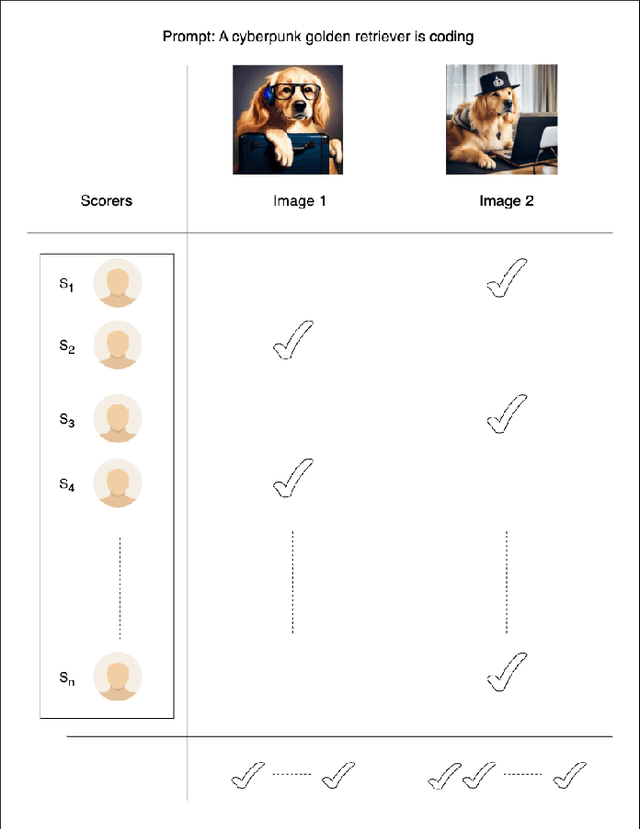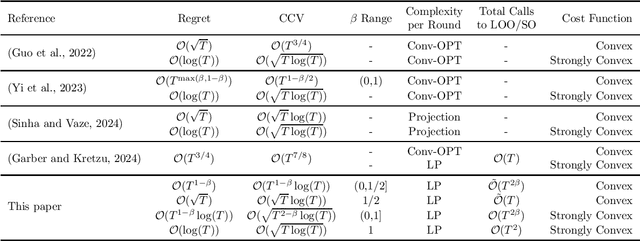Vaneet Aggarwal
Contrastive Cross-Modal Learning for Infusing Chest X-ray Knowledge into ECGs
Jun 24, 2025Abstract:Modern diagnostic workflows are increasingly multimodal, integrating diverse data sources such as medical images, structured records, and physiological time series. Among these, electrocardiograms (ECGs) and chest X-rays (CXRs) are two of the most widely used modalities for cardiac assessment. While CXRs provide rich diagnostic information, ECGs are more accessible and can support scalable early warning systems. In this work, we propose CroMoTEX, a novel contrastive learning-based framework that leverages chest X-rays during training to learn clinically informative ECG representations for multiple cardiac-related pathologies: cardiomegaly, pleural effusion, and edema. Our method aligns ECG and CXR representations using a novel supervised cross-modal contrastive objective with adaptive hard negative weighting, enabling robust and task-relevant feature learning. At test time, CroMoTEX relies solely on ECG input, allowing scalable deployment in real-world settings where CXRs may be unavailable. Evaluated on the large-scale MIMIC-IV-ECG and MIMIC-CXR datasets, CroMoTEX outperforms baselines across all three pathologies, achieving up to 78.31 AUROC on edema. Our code is available at github.com/vineetpmoorty/cromotex.
Efficient $Q$-Learning and Actor-Critic Methods for Robust Average Reward Reinforcement Learning
Jun 08, 2025Abstract:We present the first $Q$-learning and actor-critic algorithms for robust average reward Markov Decision Processes (MDPs) with non-asymptotic convergence under contamination, TV distance and Wasserstein distance uncertainty sets. We show that the robust $Q$ Bellman operator is a strict contractive mapping with respect to a carefully constructed semi-norm with constant functions being quotiented out. This property supports a stochastic approximation update, that learns the optimal robust $Q$ function in $\tilde{\cO}(\epsilon^{-2})$ samples. We also show that the same idea can be used for robust $Q$ function estimation, which can be further used for critic estimation. Coupling it with theories in robust policy mirror descent update, we present a natural actor-critic algorithm that attains an $\epsilon$-optimal robust policy in $\tilde{\cO}(\epsilon^{-3})$ samples. These results advance the theory of distributionally robust reinforcement learning in the average reward setting.
Regret Analysis of Average-Reward Unichain MDPs via an Actor-Critic Approach
May 26, 2025Abstract:Actor-Critic methods are widely used for their scalability, yet existing theoretical guarantees for infinite-horizon average-reward Markov Decision Processes (MDPs) often rely on restrictive ergodicity assumptions. We propose NAC-B, a Natural Actor-Critic with Batching, that achieves order-optimal regret of $\tilde{O}(\sqrt{T})$ in infinite-horizon average-reward MDPs under the unichain assumption, which permits both transient states and periodicity. This assumption is among the weakest under which the classic policy gradient theorem remains valid for average-reward settings. NAC-B employs function approximation for both the actor and the critic, enabling scalability to problems with large state and action spaces. The use of batching in our algorithm helps mitigate potential periodicity in the MDP and reduces stochasticity in gradient estimates, and our analysis formalizes these benefits through the introduction of the constants $C_{\text{hit}}$ and $C_{\text{tar}}$, which characterize the rate at which empirical averages over Markovian samples converge to the stationary distribution.
Sample Complexity of Diffusion Model Training Without Empirical Risk Minimizer Access
May 23, 2025Abstract:Diffusion models have demonstrated state-of-the-art performance across vision, language, and scientific domains. Despite their empirical success, prior theoretical analyses of the sample complexity suffer from poor scaling with input data dimension or rely on unrealistic assumptions such as access to exact empirical risk minimizers. In this work, we provide a principled analysis of score estimation, establishing a sample complexity bound of $\widetilde{\mathcal{O}}(\epsilon^{-6})$. Our approach leverages a structured decomposition of the score estimation error into statistical, approximation, and optimization errors, enabling us to eliminate the exponential dependence on neural network parameters that arises in prior analyses. It is the first such result which achieves sample complexity bounds without assuming access to the empirical risk minimizer of score function estimation loss.
Global Convergence for Average Reward Constrained MDPs with Primal-Dual Actor Critic Algorithm
May 21, 2025Abstract:This paper investigates infinite-horizon average reward Constrained Markov Decision Processes (CMDPs) with general parametrization. We propose a Primal-Dual Natural Actor-Critic algorithm that adeptly manages constraints while ensuring a high convergence rate. In particular, our algorithm achieves global convergence and constraint violation rates of $\tilde{\mathcal{O}}(1/\sqrt{T})$ over a horizon of length $T$ when the mixing time, $\tau_{\mathrm{mix}}$, is known to the learner. In absence of knowledge of $\tau_{\mathrm{mix}}$, the achievable rates change to $\tilde{\mathcal{O}}(1/T^{0.5-\epsilon})$ provided that $T \geq \tilde{\mathcal{O}}\left(\tau_{\mathrm{mix}}^{2/\epsilon}\right)$. Our results match the theoretical lower bound for Markov Decision Processes and establish a new benchmark in the theoretical exploration of average reward CMDPs.
Rack Position Optimization in Large-Scale Heterogeneous Data Centers
Mar 31, 2025Abstract:As rapidly growing AI computational demands accelerate the need for new hardware installation and maintenance, this work explores optimal data center resource management by balancing operational efficiency with fault tolerance through strategic rack positioning considering diverse resources and locations. Traditional mixed-integer programming (MIP) approaches often struggle with scalability, while heuristic methods may result in significant sub-optimality. To address these issues, this paper presents a novel two-tier optimization framework using a high-level deep reinforcement learning (DRL) model to guide a low-level gradient-based heuristic for local search. The high-level DRL agent employs Leader Reward for optimal rack type ordering, and the low-level heuristic efficiently maps racks to positions, minimizing movement counts and ensuring fault-tolerant resource distribution. This approach allows scalability to over 100,000 positions and 100 rack types. Our method outperformed the gradient-based heuristic by 7\% on average and the MIP solver by over 30\% in objective value. It achieved a 100\% success rate versus MIP's 97.5\% (within a 20-minute limit), completing in just 2 minutes compared to MIP's 1630 minutes (i.e., almost 4 orders of magnitude improvement). Unlike the MIP solver, which showed performance variability under time constraints and high penalties, our algorithm consistently delivered stable, efficient results - an essential feature for large-scale data center management.
BalancedDPO: Adaptive Multi-Metric Alignment
Mar 16, 2025



Abstract:Text-to-image (T2I) diffusion models have made remarkable advancements, yet aligning them with diverse preferences remains a persistent challenge. Current methods often optimize single metrics or depend on narrowly curated datasets, leading to overfitting and limited generalization across key visual quality metrics. We present BalancedDPO, a novel extension of Direct Preference Optimization (DPO) that addresses these limitations by simultaneously aligning T2I diffusion models with multiple metrics, including human preference, CLIP score, and aesthetic quality. Our key novelty lies in aggregating consensus labels from diverse metrics in the preference distribution space as compared to existing reward mixing approaches, enabling robust and scalable multi-metric alignment while maintaining the simplicity of the standard DPO pipeline that we refer to as BalancedDPO. Our evaluations on the Pick-a-Pic, PartiPrompt and HPD datasets show that BalancedDPO achieves state-of-the-art results, outperforming existing approaches across all major metrics. BalancedDPO improves the average win rates by 15%, 7.1%, and 10.3% on Pick-a-pic, PartiPrompt and HPD, respectively, from the DiffusionDPO.
Bi-Criteria Optimization for Combinatorial Bandits: Sublinear Regret and Constraint Violation under Bandit Feedback
Mar 15, 2025Abstract:In this paper, we study bi-criteria optimization for combinatorial multi-armed bandits (CMAB) with bandit feedback. We propose a general framework that transforms discrete bi-criteria offline approximation algorithms into online algorithms with sublinear regret and cumulative constraint violation (CCV) guarantees. Our framework requires the offline algorithm to provide an $(\alpha, \beta)$-bi-criteria approximation ratio with $\delta$-resilience and utilize $\texttt{N}$ oracle calls to evaluate the objective and constraint functions. We prove that the proposed framework achieves sub-linear regret and CCV, with both bounds scaling as ${O}\left(\delta^{2/3} \texttt{N}^{1/3}T^{2/3}\log^{1/3}(T)\right)$. Crucially, the framework treats the offline algorithm with $\delta$-resilience as a black box, enabling flexible integration of existing approximation algorithms into the CMAB setting. To demonstrate its versatility, we apply our framework to several combinatorial problems, including submodular cover, submodular cost covering, and fair submodular maximization. These applications highlight the framework's broad utility in adapting offline guarantees to online bi-criteria optimization under bandit feedback.
Finite-Sample Analysis of Policy Evaluation for Robust Average Reward Reinforcement Learning
Feb 24, 2025Abstract:We present the first finite-sample analysis for policy evaluation in robust average-reward Markov Decision Processes (MDPs). Prior works in this setting have established only asymptotic convergence guarantees, leaving open the question of sample complexity. In this work, we address this gap by establishing that the robust Bellman operator is a contraction under the span semi-norm, and developing a stochastic approximation framework with controlled bias. Our approach builds upon Multi-Level Monte Carlo (MLMC) techniques to estimate the robust Bellman operator efficiently. To overcome the infinite expected sample complexity inherent in standard MLMC, we introduce a truncation mechanism based on a geometric distribution, ensuring a finite constant sample complexity while maintaining a small bias that decays exponentially with the truncation level. Our method achieves the order-optimal sample complexity of $\tilde{\mathcal{O}}(\epsilon^{-2})$ for robust policy evaluation and robust average reward estimation, marking a significant advancement in robust reinforcement learning theory.
Order-Optimal Projection-Free Algorithm for Adversarially Constrained Online Convex Optimization
Feb 23, 2025
Abstract:Projection-based algorithms for constrained Online Convex Optimization (COCO) face scalability challenges in high-dimensional settings due to the computational complexity of projecting iterates onto constraint sets. This paper introduces a projection-free algorithm for COCO that achieves state-of-the-art performance guarantees while eliminating the need for projections. By integrating a separation oracle with adaptive Online Gradient Descent (OGD) and employing a Lyapunov-driven surrogate function, while dynamically adjusting step sizes using gradient norms, our method jointly optimizes the regret and cumulative constraint violation (CCV). We also use a blocked version of OGD that helps achieve tradeoffs betweeen the regret and CCV with the number of calls to the separation oracle. For convex cost functions, our algorithm attains an optimal regret of $\mathcal{O}(\sqrt{T})$ and a CCV of $\mathcal{O}(\sqrt{T} \log T)$, matching the best-known projection-based results, while only using $\tilde{\mathcal{O}}({T})$ calls to the separation oracle. The results also demonstrate a tradeoff where lower calls to the separation oracle increase the regret and the CCV. In the strongly convex setting, we further achieve a regret of $\mathcal{O}(\log T)$ and a CCV of $\mathcal{O}(\sqrt{T\log T} )$, while requiring ${\mathcal{O}}({T}^2)$ calls to the separation oracle. Further, tradeoff with the decreasing oracle calls is studied. These results close the gap between projection-free and projection-based approaches, demonstrating that projection-free methods can achieve performance comparable to projection-based counterparts.
 Add to Chrome
Add to Chrome Add to Firefox
Add to Firefox Add to Edge
Add to Edge